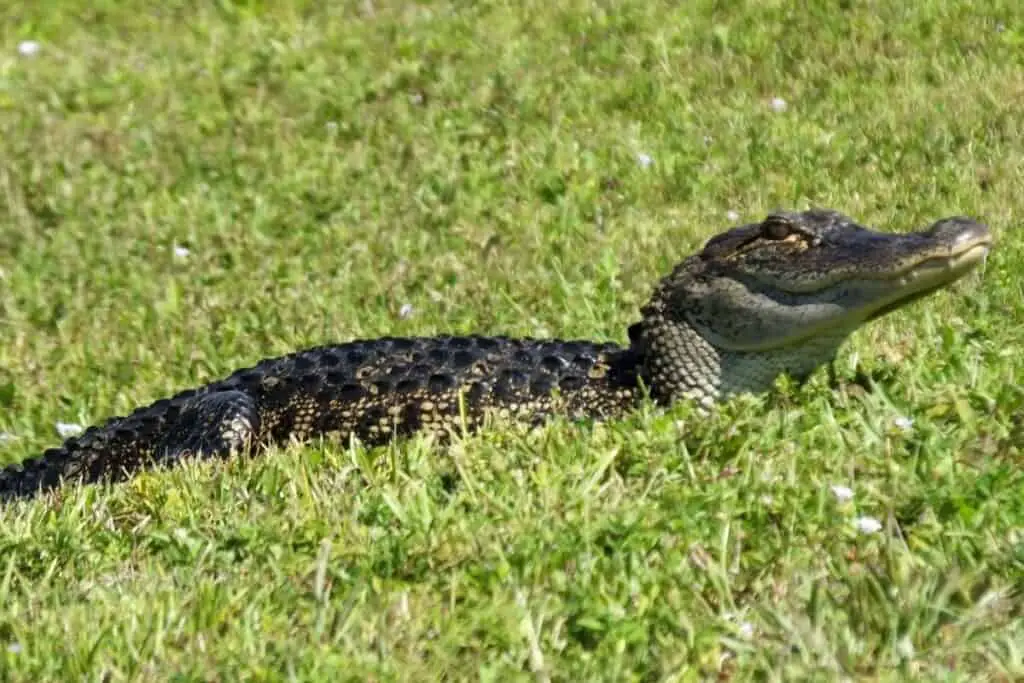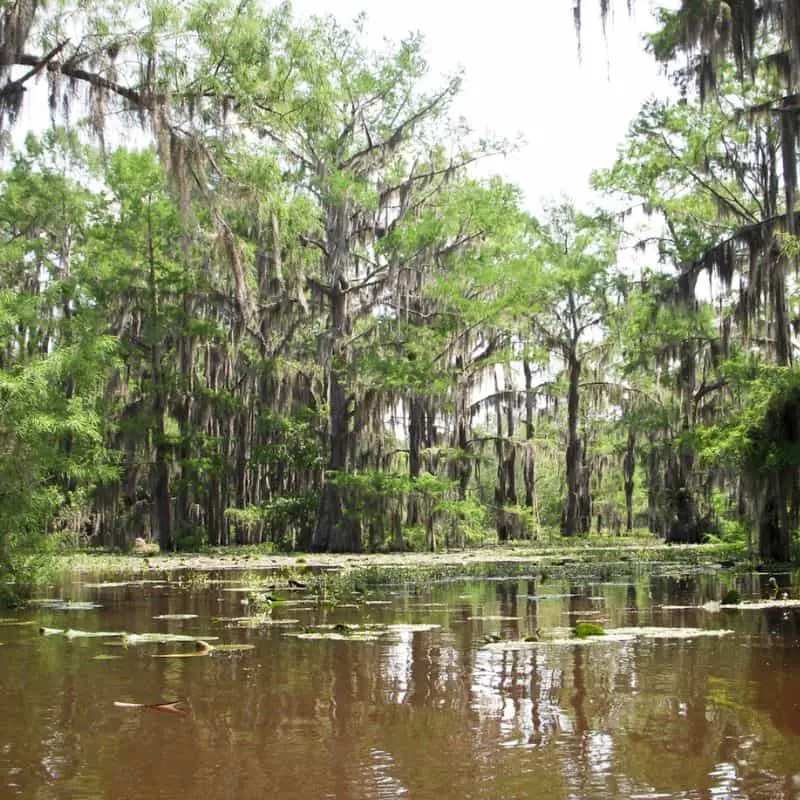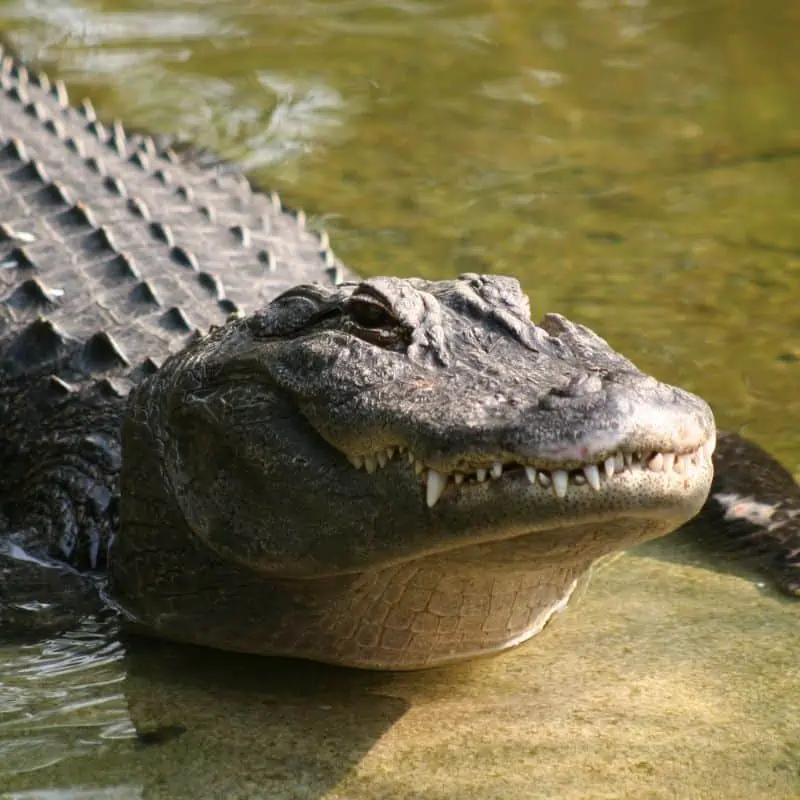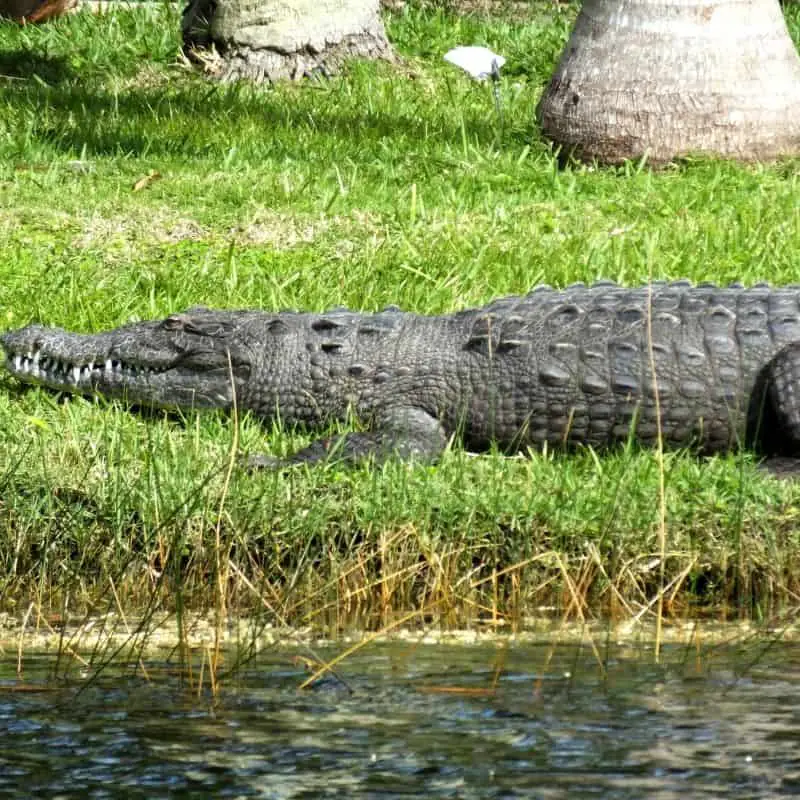The modern American alligator dates back to the Pleistocene Age and has evolved very slowly. Alligators are found only in China, Mexico, and the United States, but where in the USA exactly? Are there alligators in Texas?
There are almost half a million alligators in Texas. Alligators are more prevalent in the southern parts of Texas than in the northern regions. Alligators prefer wetland areas or where there is water for them to hunt for food, so your chances of seeing one far from the water’s edge are few.
In this article, we’ll look at which city is the alligator capital of Texas and which lakes in Texas have the most alligators. We’ll learn more about their distribution, approximate numbers, protection, and the definition of a nuisance alligator under Texas law.
Let’s get started.

Which Parts Of Texas Have Alligators?
In Texas, the alligator population is denser along the Gulf coast and in counties closer to Louisiana, the eastern part of Texas.
However, the alligator population thins out further north, so San Antonio, Dallas, and Austin do not have as many alligators as the southern counties of Texas.
How Many Alligators Are In Texas?
The Texas Parks and Wildlife Department calculated the state of Texas hosts around 400,000 to 500,000 alligators.
Texas does not have as many alligators as Louisiana or Florida.
Still, the alligators’ ratio to humans in Texas is about 1 to 60. The human population in Texas is about 29 million.
What Is A Nuisance Alligator In Texas?
States have different definitions of what a ‘nuisance alligator’ is. The Texas Administrative Code (Title 31, Part 2, Chapter 65, Section 65.352) defines a nuisance alligator as killing livestock or pets or threatening human health or safety.
People who wish to report a nuisance alligator in Texas should call the Austin-based Texas Parks and Wildlife Department Law Enforcement Communications Center at (512) 389-4848.
Alligators that do not pose a threat do not need to be reported.
Which Lakes In Texas Have The Most Alligators?
If you plan a trip to a lake in the eastern parts of Texas, you will likely see an alligator. However, some lakes are more populated with alligators than others.
The Texas lakes with the most alligators include:
- Caddo Lake
- Eagle Mountain Lake
- Lake Lewisville
- Lake Worth
Caddo Lake
Caddo Lake lies on the border of Texas and Louisiana. It falls in two Texan counties, namely northern Harrison County and southern Marion County.
Lake Caddo is known for its abundance of cypress trees and alleged ‘Bigfoot’ sightings. In addition, the 25,400-acre lake is home to a vast array of fish, reptiles, mollusks, amphibians, mammals, and birds.
Residents who live along the shores of Caddo Lake have spotted alligators over the years. The alligators enjoy lurking amongst the cypress trees and in the creeks, bayous, ponds, and canals.
In 2016, a 13-foot alligator was illegally caught and killed by an amateur alligator hunter called Jeremy Moore. Moore claimed the alligator threatened to approach him and his children.
However, state law prohibits hunting large alligators, especially if they are not on private property.

Eagle Mountain Lake
Eagle Mountain Lake lies five miles northwest of Fort Worth in northwestern Tarrant County. This reservoir is popular for watersports and sports fishing and measures 8,694 acres.
It is home to various bass, catfish, and white crappie fish. In addition, you can spot an alligator along the lake’s sandy shores or in the water.
Visitors to this lake are warned of the potential of meeting an alligator. Visitors who spot an alligator can call one of the hotlines so that local authorities can deal with the alligator if necessary.
The last prevalent alligator sighting at Eagle Mountain Lake was in 2013, although nuisance alligators have been frequent.

Lake Lewisville
Lake Lewisville is one of the largest reservoirs in northern Texas, covering about 29,000 acres.
It is based in Denton County and was initially engineered as a reservoir for flood control and as a water supply for the city of Dallas. Lake Lewisville is a popular spot for watersports and other recreational purposes.
It is home to deer, mink, birds (including turkeys), amphibians, reptiles, and invertebrates. On the road to the lake, it is not uncommon to see an alligator crossing the street.
In 2015, a 9-foot alligator made the lake its new home, causing fear among visitors and nearby residents.
However, Texas Parks and Wildlife estimates that a few dozen alligators may live in this lake.

Lake Worth
Lake Worth is another reservoir situated in Tarrant County. It falls entirely within Fort Worth’s city limits.
Lake Worth was neglected for some time but has become a recreation spot for the growing population. It is popular for water sports and recreation and covers an area of 3,489 acres.
In addition, Lake Worth (the city alongside the lake) is popular for its history, art, and architecture.
Aside from common alligator sightings, visitors to Lake worth might see armadillos and coyotes. In 2021, two wildlife photographers spotted three alligators in the lake, each around 9 to 10 feet long.
It is estimated between twelve and fifteen alligators live in Lake Worth.

Anahuac City: The Alligator Capital Of Texas
Anahuac City is a small city on the coast of Trinity Bay in Texas.
In Anahuac, the alligators outnumber the people in the county by about three to one, earning them the title of Alligator Capital of Texas.
The Anahuac National Wildlife Refuge is nearby, where visitors can spot many alligators.
How Do Alligators And People Coexist In Texas?
Alligators are an integral part of Texas’s natural history and ecosystem. Alligators lived in the swamps, marshes, bayous, and other wetlands in Texas for centuries before people arrived.
In Texas, alligators can be found in 120 of the state’s 254 counties. However, as the human population grows, more land is needed to accommodate people, often infringing on alligator habitat.
People need to understand more about alligators so they can respect them and coexist.
Are You Allowed To Hunt Or Harm Alligators In Texas?
If you wish to hunt an alligator in Texas, you need to get a special permit, as they are a protected species. American alligators were formerly an endangered species.
They are no longer under threat but are still protected game animals in Texas. Therefore, if you wish to hunt, have, or raise an alligator, you must acquire a special permit.
Texas supplied complete protection for American alligators in 1969. In 1973, American alligators were classified as endangered under the Texas Endangered Species Act.
Along with this act, the unregulated alligator hide markets in the United States were eliminated under Federal law. By 1985, alligators were delisted from endangered status because they fully recovered in numbers.
Final Thoughts On Alligators In Texas
Texas is home to about five hundred thousand alligators. You can see alligators along the eastern parts of Texas, stretching from the south to the north.
They are prevalent in some lakes and especially around Anahuac City.
Alligators were once protected under state and Federal law. A person who wishes to hunt or keep an alligator in Texas must get a special permit.

